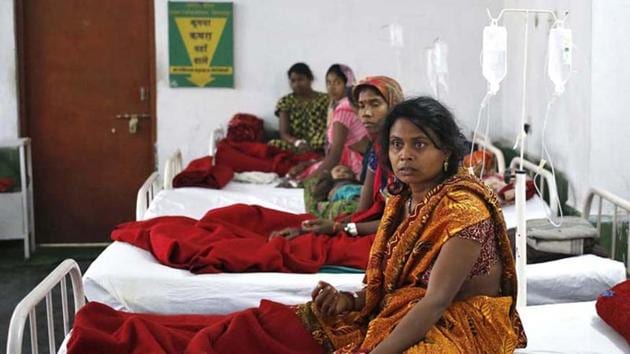Better budgetary allocation for family planning can help India meet global sustainability goals
Despite evidence that family planning is a critical area from the perspective of reducing maternal and infant mortality, allocations have been skewed and largely insufficient
A positive for the health sector in last year’s Union Budget was the stated goal to increase India’s health sector spending from the current 1.15% of GDP — one of the lowest worldwide — to 2.5% by 2025. At the same time, we need to closely examine where and how the money is being allocated and spent, so as to make the outcomes meaningful.

One needs to look at budgetary provisions from the perspective of family planning. According to the 2015-16 findings of the National Family Health Survey 4 (NFHS-4), the total demand for family planning (FP) among currently married women between the ages of 15 and 49 is 66%. The unmet need for FP services is 13%, declining by just 1% over the last decade. Less than half (48%) of currently married women in the age group of 15–49 years use modern contraceptives. Despite evidence that family planning is a critical area from the perspective of reducing maternal and infant mortality, allocations have been skewed and are largely insufficient.
Examining the budgetary allocations and expenditure offers some insight into the reasons for the tardy pace in India’s progress on family planning. The FP component gets about 4% of the total budget available under the National Health Mission’s reproductive and child health flexi-pool. Analysis of data from the financial management report shows that in the financial year 2016-17 only 60.7% of the funds available for family planning were spent. The nature of allocations and spending, which currently focuses disproportionately on terminal methods like tubectomy rather than supporting the policy objectives to promote spacing between children and improving the quality of care, is a matter of concern. For proper spacing of children, women need reversible contraceptive methods. In 2016-17, 64% of the FP budget was allocated to terminal and limiting methods, while just 3.7% went towards spacing methods.
There are also serious limitations in the capacity to utilise the funds available for family planning at the implementation stage. For instance, 40% of the money allocated for reversible methods remained unutilised. Strengthening of the systems, beginning with the planning process and going down to actual spending, can result in transformative outcomes. A decentralised, participatory planning process that factors in actual needs and resource requirements of districts, and systematic tracking and monitoring of the spending will improve utilisation.
Apart from underspending on priority areas, the more serious downside of uncoordinated planning is the proclivity to push components such as incentives that are easy to fulfil. In 2016-17, almost 81% of the FP budget was spent on compensation to beneficiaries, and incentives to frontline workers and health care providers of terminal methods of family planning. The skewed emphasis on targets defeats India’s declared policy of population stabilisation through a rights-based approach to family planning and reproductive health.
There is evidence on the ground to show that when there are improvements in the quality of care, they have resulted in a dramatic rise in uptake of family planning services. It is also well-known that without serious thought and investment in training of frontline workers and in raising awareness and acceptance of family planning through behaviour change communication, we are at best ticking check boxes to claim success in family planning goals. The government needs to increase allocations, as well as strengthen the systems that would enable better utilisation of family planning budgets.
Family planning is a cross-sectoral investment that impacts all the 17 global Sustainable Development Goals (SDGs) directly and indirectly. By prioritising family planning in the budget, India can choose its place as a lodestar rather than a dead weight in meeting the global SDGs.
Poonam Muttreja is executive director of Population Foundation of India.
The views expressed are personal.





